Flowering is delayed.
Incomplete panicle emergence.
Nodal branches produced at upper nodes.
Partially exserted panicles and unfilled grains.
2.2. Factors favoring development disease
- Presence of the vector and the host.
- Tillering, reproductive, and maturity growth stages of the rice plant.
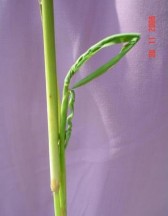
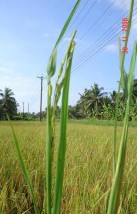
Có thể bạn quan tâm!
-
 Giáo trình Anh văn chuyên ngành bảo vệ thực vật Nghề Bảo vệ thực vật - Cao đẳng - Trường Cao đẳng Cộng đồng Đồng Tháp - 1
Giáo trình Anh văn chuyên ngành bảo vệ thực vật Nghề Bảo vệ thực vật - Cao đẳng - Trường Cao đẳng Cộng đồng Đồng Tháp - 1 -
 Giáo trình Anh văn chuyên ngành bảo vệ thực vật Nghề Bảo vệ thực vật - Cao đẳng - Trường Cao đẳng Cộng đồng Đồng Tháp - 2
Giáo trình Anh văn chuyên ngành bảo vệ thực vật Nghề Bảo vệ thực vật - Cao đẳng - Trường Cao đẳng Cộng đồng Đồng Tháp - 2 -
 Giáo trình Anh văn chuyên ngành bảo vệ thực vật Nghề Bảo vệ thực vật - Cao đẳng - Trường Cao đẳng Cộng đồng Đồng Tháp - 4
Giáo trình Anh văn chuyên ngành bảo vệ thực vật Nghề Bảo vệ thực vật - Cao đẳng - Trường Cao đẳng Cộng đồng Đồng Tháp - 4 -
 Giáo trình Anh văn chuyên ngành bảo vệ thực vật Nghề Bảo vệ thực vật - Cao đẳng - Trường Cao đẳng Cộng đồng Đồng Tháp - 5
Giáo trình Anh văn chuyên ngành bảo vệ thực vật Nghề Bảo vệ thực vật - Cao đẳng - Trường Cao đẳng Cộng đồng Đồng Tháp - 5 -
 Giáo trình Anh văn chuyên ngành bảo vệ thực vật Nghề Bảo vệ thực vật - Cao đẳng - Trường Cao đẳng Cộng đồng Đồng Tháp - 6
Giáo trình Anh văn chuyên ngành bảo vệ thực vật Nghề Bảo vệ thực vật - Cao đẳng - Trường Cao đẳng Cộng đồng Đồng Tháp - 6
Xem toàn bộ 90 trang tài liệu này.
![]()
2.3. Causes
Figure 1.7. Shapes of inflected paddy panicles
(Photo: Internet source)
The infection and the vector density are very high in tropical regions where rice is planted year-round.
The presence of the vector and the host continuously support the development of infection or pathogen.
2.4. Management principles
There are no specific control measures for the ragged virus disease except for the use of resistant varieties because some rice varieties are resistant to the brown planthopper, to the virus, and to both.
Cultivars resistant to the vector have low disease incidence.
Practice synchronized planting.
Plow infected stubbles under the field after harvest to reduce the virus source.
Exercises
Task 1: Read part 1.2.2 and answer the following questions.
1/ What parts of rice plant have got symptoms of diseases?
…………………………………………………………………..
2/ What part of rice plant has the most distinct appearance of symptoms?
…………………………………………………………………..
3/ How are parts of leaves inflected?
…………………………………………………………………..
4/ List forms and shapes of inflected leaves.
…………………………………………………………………..
5/ Is the early growth stage of crop attacked by the disease?
…………………………………………………………………..
6/ Where are the places of very high inflection?
…………………………………………………………………..
7/ Apart from using resistant varieties, what is being used in temperate countries to reduce disease incidence?
…………………………………………………………………..
Task 2: Refer part 1.2.2 and translate into English.
1. Nơi phồng to của gân lá có màu vàng nhạt, trắng hoặc nâu sậm.
……………………………………………………………………………….
2. Mầm bệnh dễ lây lan ở những nơi mà cây lúa được trồng quanh năm.
……………………………………………………………………………….
3. Sử dụng giống kháng bệnh cũng góp phần ngăn ngừa và làm giảm được bệnh.
……………………………………………………………………………….
4. Triệu chứng của bệnh biểu hiện qua sự thay đổi màu sắc, hình dạng trên các bộ phận của lá như phiến lá, mép lá và gân lá.
……………………………………………………………………………….
Introduction
UNIT 2 VEGETABLES MH35-02
Improving the soil used to grow vegetables is one of the best ways to see bigger plants, more produce and fewer problems.
Objectives:
By the end of the lesson, learners are able to:
+ Enhance reading skills through exercises of comprehension such as skimming for main ideas, categorizing words with their meanings.
+ Understand meanings of new words and use in proper contexts.
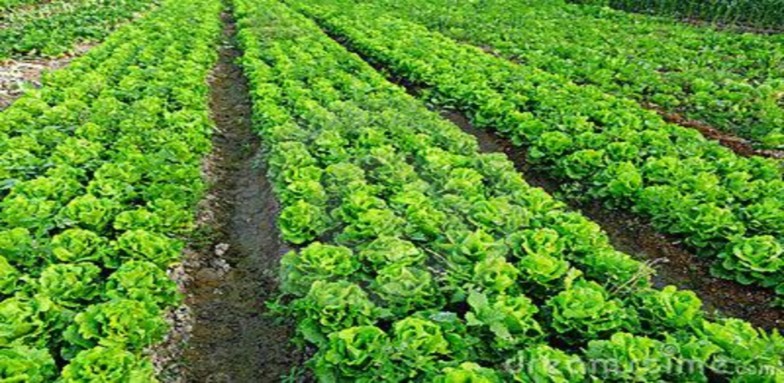
1. Soil preparation for growing vegetables
1.1. Overview
Improving the soil used to grow vegetables is one of the best ways to see bigger plants, more produce and fewer problems. In general, garden soil should be loamy (or sandy and loamy), with plenty of organic matter. Soil should be tailored to meet the needs of specific vegetables whenever possible to improve your results. For example, tomatoes require plenty of organic matter and acidic soil where carrots cannot tolerate the same acidity and prefer a loose soil without stones or clumps.
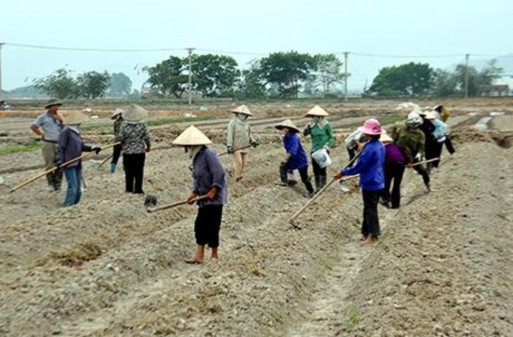
Figure 2.1. Farmers are preparing soil for growing vegetables
(Photo: Ngo Diu)
1.2. Improvement Step 1
Loosen the soil by tilling or digging and turning. Roots will be able to more easily penetrate soil that has been broken apart. This process also helps create pockets of air to supply oxygen that roots need to thrive. Heavy clay soil compacts, holding too much water, preventing air from getting to roots and roots from being able to develop well.
Step 2
Improve drainage. According to Mississippi State University, heavy soils like clay don't drain well, while sandy soil may drain too quickly. In very poor soils or areas with drainage trouble that resists repair, raised beds may be a better way to garden.
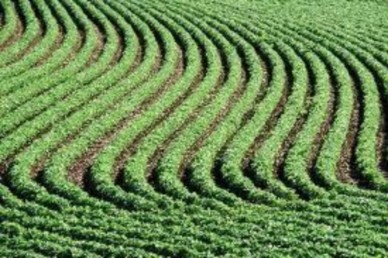
Figure 2.2. Raising winding beds to keep water irrigated in inclined terrains
(Photo: Internet source)
Step 3
Add organic matter to increase the level of nutrients available to plants. Organic matter can help hold water and keep roots moist. It can also be used to improve very sandy, clay ridden or densely packed soils. Add soil conditioners to improve structure. These include sawdust, coarse sand and perlite. Some additions do double duty as conditioner and organic matter, including compost and peat moss.
Step 4
Plant a cover crop. Also called green manure, cover crops include legumes (such as clover and vetch) and cereal grains (like oats, wheat or rye). Such growth keeps weeds out of the garden space during months it is not in use, adds nitrogen and fertility to the soil and fights erosion.
Step 5
Test the soil pH. Soil pH makes different nutrients more or less available to plants for use. Certain plants require specific amounts of various nutrients (Nitrogen, Potassium and Phosphorous in particular) in order to resist disease and achieve their best rate of growth.
Exercises
Task 1: Read part 2.1 and provide the following information.
There are five main steps of improvement to make soil. They are:
1/ ………………………………………………………………...
2/ ………………………………………………………………...
3/ ………………………………………………………………...
4/ ………………………………………………………………...
5/ ………………………………………………………………...
Soil
…………….
…………….
…………….
…………….
…………….
Task 2: Refer part 2.1 and sort the words in the box to the same topics.
wheat alkaline soil
rice
animal manure
very sandy
heavy clay compost millet
peat moss oat
sawdust
densely packed soils
infertile soil
rye
Cereal grain
…………….
…………….
…………….
…………….
……………..
Organic matter
…………….
…………….
…………….
……………..
……………..
2. Minimizing diseases in vegetable garden
Plants sometimes get sick. Vegetable plants usually are capable of fending off disease-causing bacteria, viruses, and fungi. But if conditions favor the disease and plants are weak, the disease sometimes gains the upper hand, often leading to early death of the plants.
The tips below will help gardeners minimize the effects of plant diseases on the garden by employing two basic strategies:
Keep plants as strong and healthy as possible.
Minimize the conditions that favor disease and its spread.

Figure 2.3. Taking care of the vegetable garden
(Photo: Ngo Thanh)
Choosing resistant or tolerant varieties
This is the easiest and most important way to reduce diseases in the garden. Resistant varieties resist infection by a particular disease agent and show little or no disease. Tolerant varieties may show symptoms of the disease, but still yield the same as resistant varieties or susceptible varieties protected by pesticides.
Using treated seed
Seed may come pretreated with a dusting of fungicide. This coating will help prevent the seed from rotting in the soil before germination and help protect the emerging seedling from a harmful "damping off" pathogen that girdles and kills
young plants shortly after they emerge. If seed rot or damping-off has been a problem in the garden, treating seed with a fungicide will help.
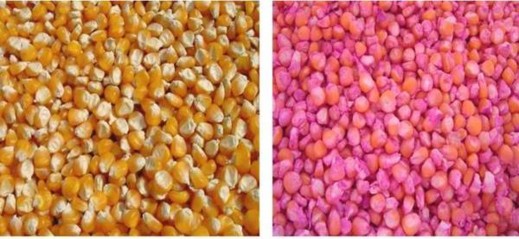
Figure 2.4. Whole seeds and seeds treated
(Photo: info.vsapat@gmail.com)
Free-of-disease seeds, transplants, and propagating material
Start with healthy plant material to help plants get established quickly. Unhealthy plant material will never yield as much as healthy material. Worse, plants may die while they are still young. Reputable seed companies sell only disease-free plant materials. Some seeds are treated with hot water to remove infectious agents, and then tested to reduce the risk of seed-borne viruses. When shopping for transplants or other propagating material, take time to examine the plants to make sure they are healthy and vigorous.
Choosing a sunny, well-drained location
Most vegetable crops thrive in full sun. Shady, poorly drained sites produce weak, spindly plants that are easy targets for disease organisms. Even if such plants survive free of disease infections, they will not yield as much as strong, healthy plants.
Improving the soil
When a garden site has heavy, wet soil, plant in raised beds or ridged rows so that the soil around plants' roots won't be waterlogged. Heavy, wet soils discourage healthy root growth and encourage root rots. If a garden is planted on a slope,





